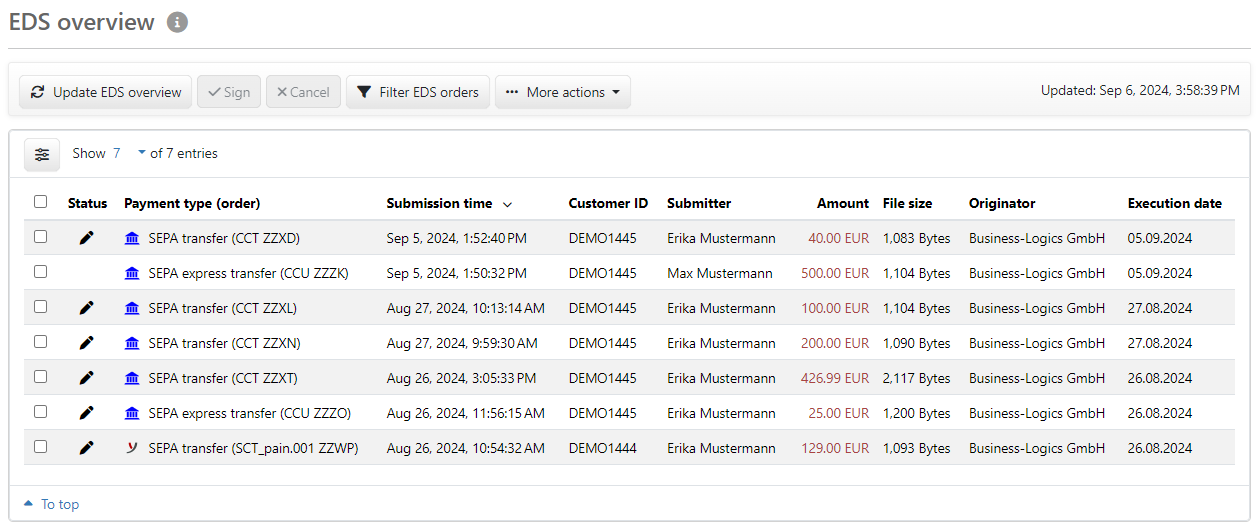
Figure: Overview of the orders to be signed
When orders are sent to a bank, they must be signed with at least one electronic signature. Beyond that, the bank can set up an authorization concept based on the four-eyes-principle, whereby each order must be signed by two persons. This is made possible by the Electronic Distributed Signature (EDS), where a subscriber submits an order to the bank, which in turn must be approved by another subscriber before it is posted by the bank.
The EDS overview can be opened via the menu Orders and by default also via Quick access from the Home page. The page shows all orders that have already been submitted to the bank, but are still waiting for approval. This includes orders that have been submitted both by yourself and by other subscribers.
The orders waiting for approval are grouped by banks for better clarity. Orders that you can sign are marked with a pencil symbol in the Order column. Orders without this symbol in contrast, can only be cancelled by you. In the User column, you can see which subscriber submitted the order.
Orders that have already been completely signed are no longer displayed here, but in the overview Signed EDS orders. The same applies to canceled orders.
When you call up this page, the orders from the last retrieval from the bank are displayed. To retrieve the latest EDS orders that are available at the bank, click Update EDS Overview.
The buttons Sign and Cancel are only activated if at least one order is selected in the overview. If several orders are selected, the number of orders that can be signed or cancelled is displayed in the respective button. You can then click on one of the buttons to call up the page EDS order details and sign or cancel all marked orders at once. The same page is also called up if you click on a line in the overview.

Figure: Overview of the orders to be signed